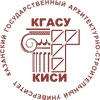About the authors
| First name, Middle name, Last name, Scientific degree, Scientific rank, Current position. Full and brief name of the organization, The organization address. | Nadyrova H.G. – doctor of architecture, associate professor E-mail: This e-mail address is being protected from spambots. You need JavaScript enabled to view it Kazan State University of Architecture and Engineering The organization address: 420043, Russia, Kazan, Zelenaya st., 1 Rusinova A.A. – architect E-mail: This e-mail address is being protected from spambots. You need JavaScript enabled to view it JSC «Mosproekt-3» The organization address: 107031, Russia, Moscow, Kuznetsky Most st., 3 |
| Title of the article | Architecture and spatial organization of the county-level cities Kazan province during the late XVII-XVIII centuries |
| Abstract. | In the town-planning analysis identified the major factors of formation and development of county-level cities of Kazan Volga region: the location of the fortified cities in the defense of strategic locations, on-site pre-existing settlements, connected by trade routes, on elevated areas, the river or its tributaries. At the beginning of the XVIII century walled city losing military importance, they become commercial, craft, the administrative center of the county. It was established that during the XVII-XVIII centuries planning structure of county-level cities of Kazan province had a free layout, subordinated terrain conditions differ by type: radial (Tetyushi, Elabuga), straight (Tsivilsk), mixed (Sviyazhsk). Pre-regular planning structure of the various nationalities of the province had its own peculiarities. A Russian settlement received its development relative to sales areas and coastal areas. The Muslim villages were characterized by high density, hiding their possessions, their orientation to the internal device. Mari and Chuvash village arose spontaneously, formed grouped separate yard estates or groups of households – the neighborhood. During the XVII-XVIII centuries a Russian population had the greatest impact on the traditional type of building of the Tatar, the Chuvash and the Mari, who inhabited the province. |
| Keywords. | settlement system, natural topological conditions, trade route, pre-regular planning structure, densely-group form of development, religious dogma. |
| For citations: | Nadyrova H.G., Rusinova A.A. Architecture and spatial organization of the county-level cities Kazan province during the late XVII-XVIII centuries // Izvestiya KGASU. 2016. №4(38) P.26-34. |
















